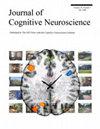在工作记忆中表示上下文和优先级
IF 3.1
3区 医学
Q2 NEUROSCIENCES
引用次数: 0
摘要
对工作记忆(WM)中的内容进行优先排序的能力对于成功控制思维和行为至关重要。最近的研究表明,工作记忆中的优先级可以通过用不同的表征格式来表示不同的优先级状态来实现。在这里,我们用递归神经网络模拟了双序列倒摄任务,从而探索了 WM 优先级的内在机制。利用主成分分析对刺激表征动态进行可视化后发现,网络通过不同的机制来表征试验情境(呈现顺序)和优先级。顺序上下文是试验持续时间内的稳定属性,是通过将表征分离到正交子空间来实现的。优先级在试验过程中会发生多次变化,是通过在每个子空间中将表征分离成不同的阶层来实现的。我们通过对 fMRI 和脑电图数据集进行降维和多类解码来评估这些机制的通用性,结果发现优先级和上下文在背侧视觉流中的表示方式不同,而且行为表现对优先级编码的逐次试验变化很敏感,但对上下文编码却不敏感。本文章由计算机程序翻译,如有差异,请以英文原文为准。
Representing Context and Priority in Working Memory
The ability to prioritize among contents in working memory (WM) is critical for successful control of thought and behavior. Recent work has demonstrated that prioritization in WM can be implemented by representing different states of priority in different representational formats. Here, we explored the mechanisms underlying WM prioritization by simulating the double serial retrocuing task with recurrent neural networks. Visualization of stimulus representational dynamics using principal component analysis revealed that the network represented trial context (order of presentation) and priority via different mechanisms. Ordinal context, a stable property lasting the duration of the trial, was accomplished by segregating representations into orthogonal subspaces. Priority, which changed multiple times during a trial, was accomplished by separating representations into different strata within each subspace. We assessed the generality of these mechanisms by applying dimensionality reduction and multiclass decoding to fMRI and EEG data sets and found that priority and context are represented differently along the dorsal visual stream and that behavioral performance is sensitive to trial-by-trial variability of priority coding, but not context coding.
求助全文
通过发布文献求助,成功后即可免费获取论文全文。
去求助
来源期刊
CiteScore
5.30
自引率
3.10%
发文量
151
审稿时长
3-8 weeks
期刊介绍:
Journal of Cognitive Neuroscience investigates brain–behavior interaction and promotes lively interchange among the mind sciences.

 求助内容:
求助内容: 应助结果提醒方式:
应助结果提醒方式:


